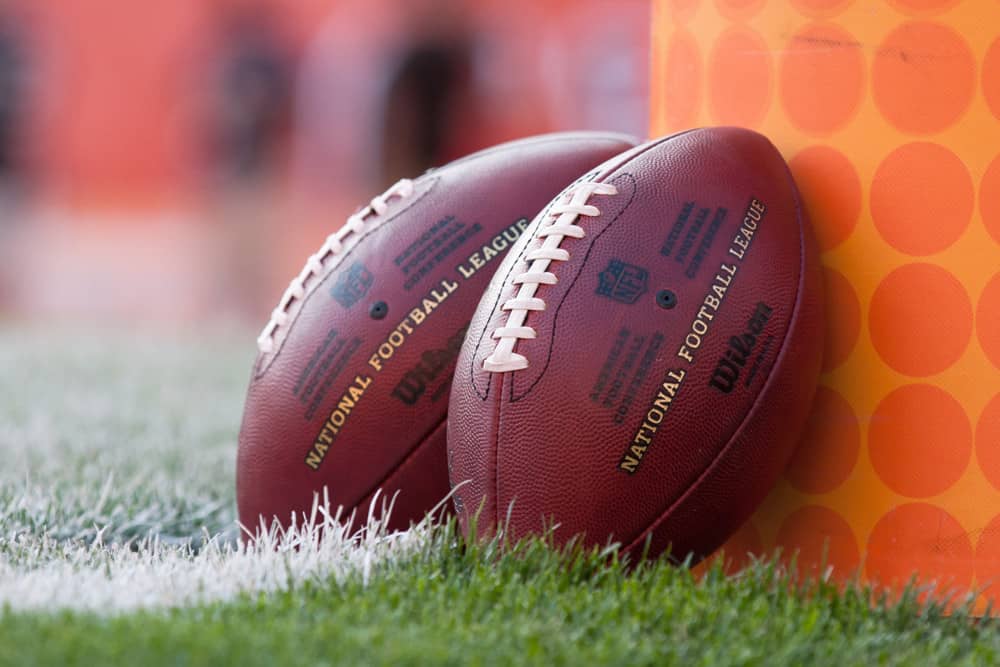With roughly a minute and a half to play in the first quarter of their September 4, 1994, Week 1 game against Cincinnati, Cleveland Browns quarterback Vinny Testaverde dropped back to pass.
Scanning to his right, Testaverde spotted running back Leroy Hoard, tossed him the pigskin, and Hoard galloped in for a touchdown.
The score gave Cleveland a 9-0 lead over their cross-state rivals.
Onto the field stepped Browns placeholder and punter Tom Tupa.
Tupa took his usual place a few yards behind center and got set to receive the snap to hold the ball for the point after attempt.
What he did next went into the NFL history books as well as Browns lore.
History of the Two-Point Attempt
In 1958, the two-point conversion was added to the college football rule book.
Basically, the new rule stated that, in addition to kicking the usual one-point conversion, teams could now go for two.
The official would place the ball at the three-yard line and the offensive team could run or pass the ball into the end zone.
If they scored, the team receives two points.
If not, the team is only credited for the six-point touchdown.
The move was made to put a little extra excitement into the sport.
Previously, if a team was down by more than seven points with little time remaining, they basically had no shot.
Even if the losing team did score a touchdown, they still couldn’t win, barring a miracle.
The powers that be in college football decided that the opportunity to try for two would serve two main purposes.
One, the losing team gets a chance to tie or win a game at the end of regulation.
The second reason, keeping spectators in their seats.
Most of the time, fans saw the writing on the wall at the end of games and would get up and leave early.
This new rule would keep fans on the edge of their seat instead of walking to the parking lot.
It didn’t take long for other leagues to adopt the new precedent.
In 1975, Canadian amateur and professional football teams instituted the rule.
The idea was so exciting that both the Canadian Football League and college football added a twist.
In college football, two-pointers became mandatory beginning with the third overtime.
The CFL decided to make it mandatory at any point in overtime.
In 1960, the American Football League used the two-point rule until it merged with the National Football League.
Even with the added nuance, the rule provided to the game, the NFL opted not to use the two-pointer after the merger.
It took 25 years for the league to finally assent to the idea and added it to the rule book before the 1994 season.
The NFL also moved the ball placement for the conversion attempt to the two-yard line instead of the three.
It did not take long for NFL teams to put the newly added rule into their playbooks.
Enter Tom Tupa
The @Browns had the honor of becoming the first ever NFL team to score a 2 pt. conversion 25 years ago today. The man to run it in? Former Buckeye QB, Tom “Two Point” Tupa.
Pay homage. pic.twitter.com/6gqrXgSv38
— HOMAGE (@HOMAGE) September 4, 2019
Then Browns head coach Bill Belichick enjoyed tinkering with the playbook and the rule book.
The two-point play was like a fascinating new toy to play with.
Tupa and his ability to pass, place hold, and punt was a secret weapon to deploy at the right moment.
Before the Week 1 game at Cincinnati, then special teams coach Scott O’Brien saw on film that the Bengals lined up rather weak on their left side during extra points.
O’Brien and Belichick schemed this nugget into their game plan.
The Browns first score of the day was a Matt Stover field goal with 7:00 left in the 1st quarter.
When Hoard scored from the Cincinnati 11 with 1:22 remaining, it was time for Tupa to do his thing.
When the ball was snapped, Tupa immediately stood up and started running to his left.
Fortunately for him, Browns left tackle Orlando Brown, and his large 6’7” 325 frame, paved the way.
Tupa then dove into the end zone and into the record books.
His successful attempt put the Browns up 11-0 on their way to a 28-20 win.
“Two Point Tupa”
That wouldn’t be it for Tupa’s two-point fame.
He also converted two more two-point conversions during the ‘94 season.
The team then bestowed on him the moniker “Two-Point Tupa.”
Opponents had to account for Tupa during the ‘94 season and beyond.
By then, teams knew that his history as a quarterback meant that he was always a threat to make a play, even in the placeholder position.
Tupa could run the ball in for a conversion, or fake a run and throw the ball to an eligible receiver.
After playing for Cleveland in 1995, Tupa went on to throw or punt for four more teams, play in Super Bowl 37 and make the Pro Bowl twice.
He retired from football in 2006.
Tupa’s trailblazing play would set the tone for the rest of the league.
The two-point conversion is now a regular staple in the NFL.
Coaches even have a cheat sheet of when they should go for two.
For a brief moment in time, the Browns were the center of attention for something positive and innovative.
The NFL can thank Tupa, Belichick, and O’Brien for thrusting the game into bold, new territory.
NEXT: Otto Graham Named To NFL's All-Time Team As Top 10 QB